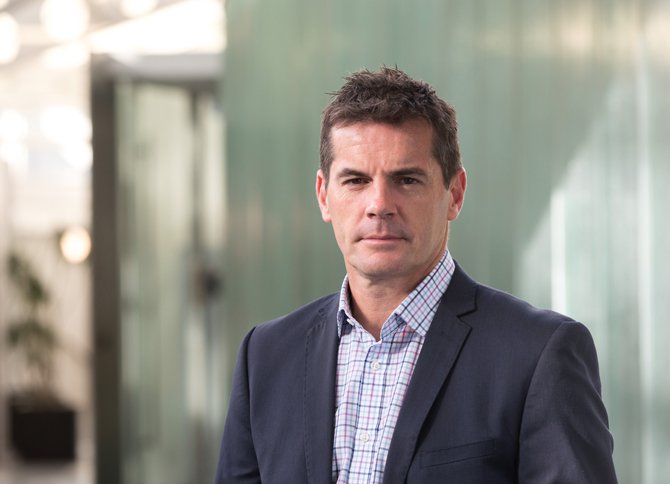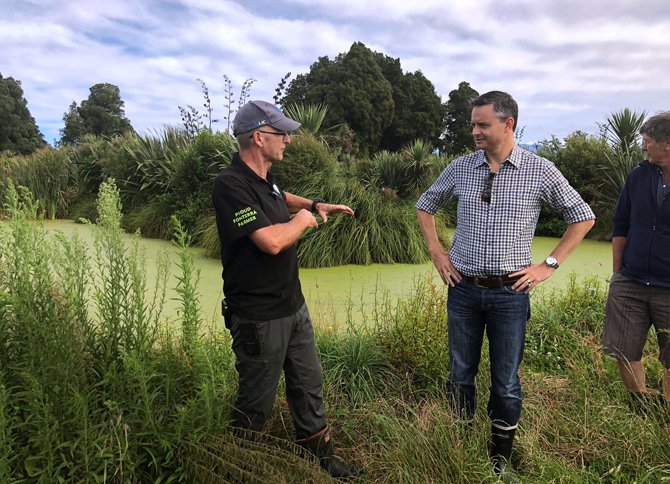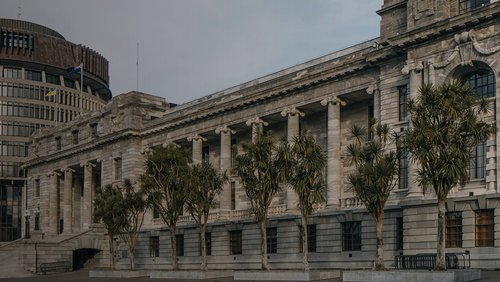12 Sep 2018
Engineers are solution-focused, so it makes good sense to have been chosen for the Government’s committee laying the groundwork for reducing New Zealand’s greenhouse gas emissions to net zero by 2050.
Hitting zero greenhouse gas emissions by 2050 is an ambitious target, admits Dr David Prentice FEngNZ CPEng, Chair of the Government’s Interim Climate Change Committee. But at this stage, the focus is on what the pathway looks like and how the transition will happen.
“The transition needs to be about ensuring that any changes are enacted in a fair and balanced way for all New Zealanders, and that we don’t stuff up the economy in the process,” David says.
Since coming into power, the Labour Government has made addressing climate change a priority. It has set up the Committee as a precursor for the work that will follow, including the Zero Carbon Bill to be introduced in October, putting climate targets into law. An independent Climate Change Commission will be established under the Zero Carbon Act in 2019, to provide expert advice and hold current and future governments to account.
The Committee is developing evidence and analysis on ways of delivering efficient emission reductions from the agriculture sector. This will include how methane and nitrous oxide emissions from the sector could enter the Emissions Trading Scheme, and plans for moving to 100 percent renewable electricity generation by 2035.
The work comes with all the challenges that would be expected when setting the course for what will be a multi-generational, national response to climate change.
“The more I look at this, the more I realise this is such an unbelievably important piece of work that absolutely requires us to get it right,” David says.

Dr David Prentice is on the Government's Interim Climate Change Committee, looking at achieving zero greenhouse gas emissions by 2050.
Challenges and opportunities
David’s appointment follows more than seven years as Chief Executive of Opus International Consultants. He sees many crossovers between engineering and a role in which he’s been asked to provide “coherent leadership” to an issue that affects every New Zealander.
“It ties back to your core DNA as an engineer. I came into engineering because I wanted to build stuff and provide solutions for existing communities and future generations.
“You get a sense of pride in doing that, and in many ways, that’s where I see we are with climate change – the need to address both the challenges and opportunities this presents for New Zealand.”
David is keenly aware of the importance of building trust and credibility by engaging early and effectively with the wide-ranging group of people who’ll be affected by the transition.
“The rhetoric of how we do that has to come from a pragmatic, balanced, community-based angle – something engineers are very good at.”
He describes his move from Opus to his role on the Committee as “quite a change”. He says he feels incredibly lucky and honoured to have led Opus and is proud of what he achieved, but felt the time was right to step aside and make way for others.
While considering his next opportunity, David’s name was put forward to chair the Committee. Before accepting the role, he met with Climate Change Minister James Shaw.
“When I sat down with the Minister I was firm in the belief that if we were to put together a committee to address the issue of how to reduce emissions, then the question of the economic impact had to be front and centre.”
David says while net zero emissions are the goal, the transition can’t be done in isolation of the need to continue to maximise economic output, and must consider the sectors and socio-economic groups who’ll be most affected.
Engineering responses to complex problems
Fellow engineer Dr Keith Turner DistFEngNZ is another of the six Committee members. With extensive experience in the power industry, including as Chief Executive of Meridian Energy, he believes New Zealand is well placed for the transition ahead. He points to the “extraordinary transition” that’s already happened, from the early years of exploiting our natural resources to today, with roughly 80 percent of our electricity generated from renewables like hydro and geothermal.
Other modern advancements, like banning chlorofluorocarbons (CFCs) in the 1990s, show collective action has the capability to improve the environment. The hole in the ozone layer above Antarctica and New Zealand is believed to have been caused by CFCs used in refrigerants and as a propellant in aerosol cans. Since the international effort to ban them in the 1990s, the hole has dramatically decreased.
“I would hold that up as a good example of a regulatory pursuit of a change, with some extraordinary engineering response to that pressure,” Keith says.
It ties back to your core DNA as an engineer. I came into engineering because I wanted to build stuff and provide solutions for existing communities and future generations.
“If you look at modern refrigeration today, it’s still very efficient and not using anything like the same CFCs that were being used in the early 1990s.” (See EG Issue 3/2018 p36 for an article about refrigerants.)
Keith says the challenge of gradually transitioning to net zero emissions by 2050 will require finding “new ways of doing things that we’ve been doing for a long time”, and engineering will be a key part of the response.
“It means innovation and creativity, and accepting that what we’ve done in the past isn’t necessarily what we’ll do in the future. That places a huge challenge on engineers, thinking about solving problems that have been solved before but in new ways.
“The engineering profession is outstanding at solving complex problems,” says Keith.
Technology is a key part of the transition.
“You’ve only got to look at the modern technology that we use and it’s all come from engineering.”
The potential is huge, and we’re already seeing the benefits – whether it’s nanotechnology that allows a film on a window to produce solar electricity, to increasingly faster and more efficient electric vehicle charging infrastructure.
This doesn’t, of course, come without its challenges. Keith singles out transport as one such area.
“There’s a big transition underway to electric transport and it all needs to be charged up. But if we electrify the fleet, there’s no point if you have to build coal-fired power plants to do that.”
Then there’s the potential economic shock from sacrificing high-earning, carbon-emitting sectors to meet our targets.

Climate Change Minister James Shaw (right) at Kaiwaiwai farm in the Wairarapa. Photo ©Stuff Limited
Crossing the political divide
Climate Change Minister James Shaw says action on climate change is in fact likely to help us gain an economic advantage “as an early mover”, particularly on low-emission farming.
While the economy will look “very different” in 2050, by taking a carefully planned approach, we can minimise, and adapt to, disruptions in a managed way through the transition period.
“ln the transition, we’d need to increase investment into low-emission innovations and continue our world-leading research to reduce emissions on farms.
“Sharing our experience and innovation with other countries can help contribute to global efforts to reduce greenhouse gas emissions.
“We can provide more certainty to businesses so they can make long-term investment decisions and we can begin working with communities that will need to transition jobs from emissions-intensive industries into new, emerging sectors, and thereby support the change over the next 30 years.”
Our changing climate was the subject of much debate in last year’s election, and the Zero Carbon Bill’s proposals haven’t been without criticism. But David Prentice says the issue is of such significance, it crosses the political divide.
That’s something even National Party Leader Simon Bridges recognises, having offered bipartisan support to the Government for a non-political Climate Change Commission.
“That’s why it was so important – he’s basically saying this isn’t a political issue, and it underlines the message that everyone, whoever they are, has a part to play in this,” David says.
Engineering New Zealand has launched a thought leadership publication, Engineering a Better New Zealand, which examines issues identified as critical to New Zealand’s prosperity.
Seismic resilience
We’re still feeling the effects of the Canterbury and Kaikōura earthquakes. How do we ensure New Zealand’s approach to community resilience, infrastructure and buildings reflects everything we’ve learned?
Water
Water infrastructure is under pressure. It’s often old, potentially no longer fit for purpose, and not designed for our changing climate. What can be done to improve water quality and reduce flood hazards?




